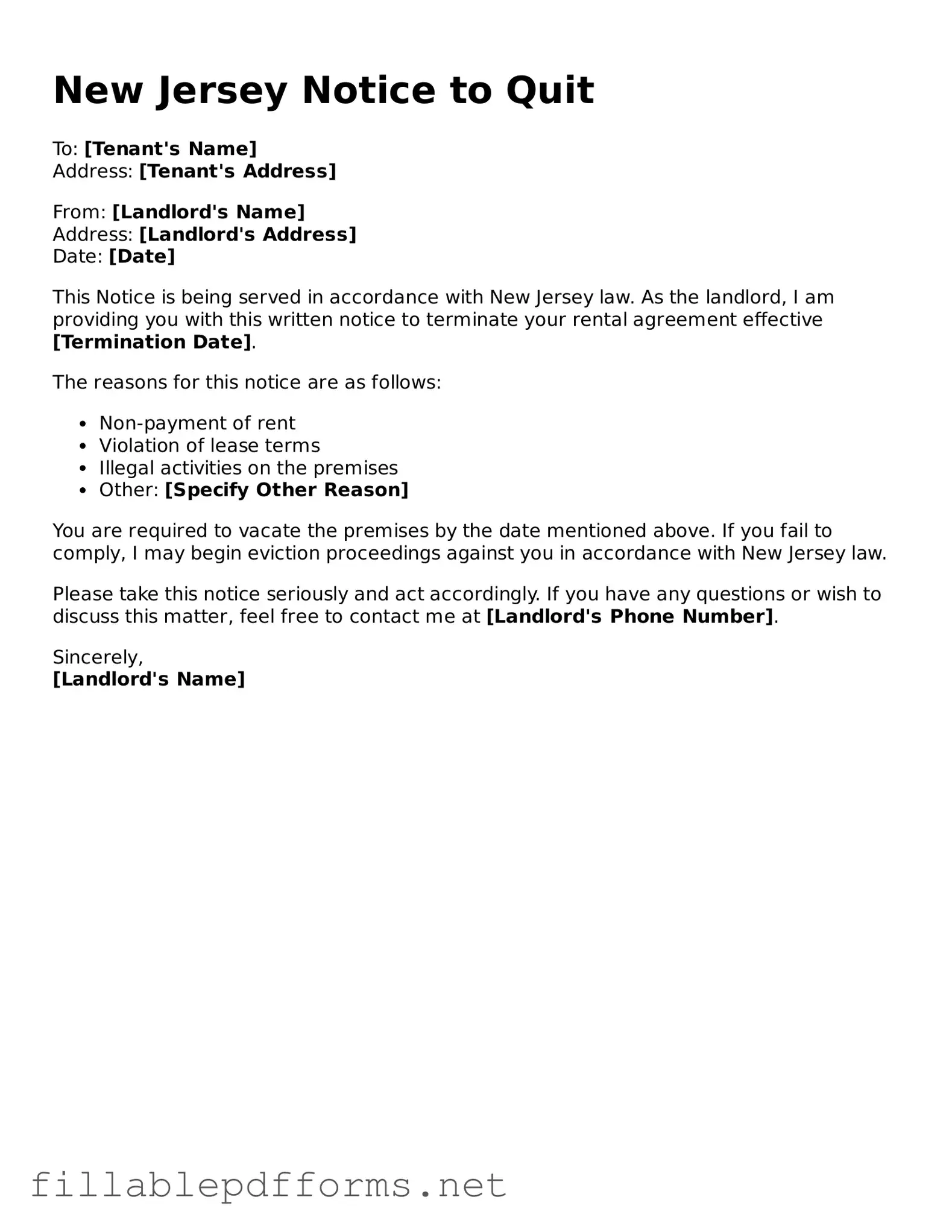Attorney-Verified Notice to Quit Form for New Jersey State
The New Jersey Notice to Quit form is a legal document used by landlords to formally notify tenants that they must vacate the rental property. This notice typically outlines the reasons for eviction and provides a specific timeframe for the tenant to leave. Understanding this form is crucial for both landlords and tenants to ensure compliance with state laws and protect their rights.
Launch Editor Here
